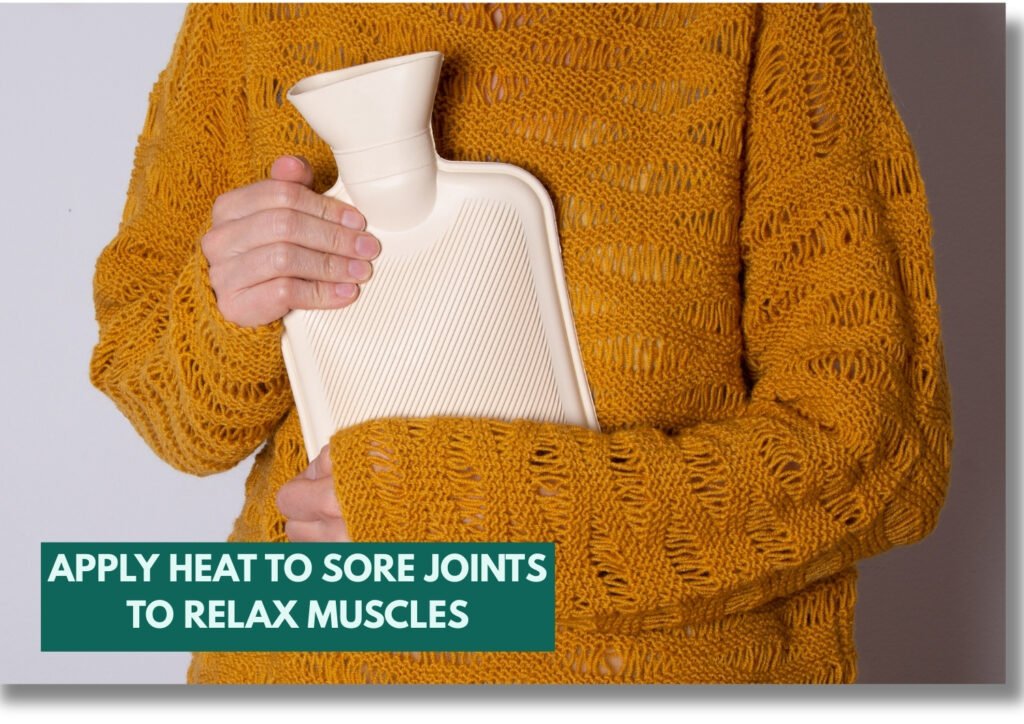Exploring the Connection Between Weather Changes and Joint Pain

Last Updated on June 27, 2025 by Julian Espinosa
Have you ever noticed your knees acting up just before a thunderstorm rolls in? You’re certainly not alone in this experience. Many people find themselves playing amateur meteorologist, predicting weather changes based on how their joints feel. While this might sound like folklore passed down through generations, there’s fascinating science behind this phenomenon affecting millions of people.
Weather changes, particularly shifts in barometric pressure, temperature, and humidity, can indeed influence joint comfort and mobility. Recent research shows that when atmospheric pressure drops before storms, tissues in your body can expand slightly, leading to increased stiffness or discomfort in your joints. Cold weather compounds this effect, as chilly air causes muscles and ligaments to tighten, making movement feel more challenging than usual.
But here’s the empowering truth: understanding this connection gives you the power to take proactive steps. Whether it’s through gentle exercise routines, anti-inflammatory nutrition choices, or simple comfort measures like warming pads, you can significantly reduce weather-related joint discomfort.
This comprehensive guide explores the scientific relationship between weather patterns and joint health, debunks common myths, and provides practical strategies tailored specifically for active adults navigating their retirement years. You’ll discover evidence-based approaches to managing symptoms, lifestyle modifications that can make a real difference, and expert tips for staying comfortable regardless of what Mother Nature has in store.
Ready to take control of your joint comfort and stop letting the weather forecast dictate your daily plans?

Discover The Connection of Weather Changes and Joint Pain
Have you ever noticed your joints acting up just as a storm rolls in? You’re not alone. Many people swear that they can feel the weather change in their bones, literally. Though it might sound like folklore, there’s a bit of science behind this phenomenon. Changes in barometric pressure, humidity, and temperature can indeed impact your joints.
When a storm approaches and the barometric pressure drops, it can cause the tissues in your body to expand slightly, which might lead to increased pain or stiffness in your joints. You might find that cold weather exacerbates this feeling, as the chilly air causes muscles and ligaments to stiffen, making movement more uncomfortable than usual.
It’s not just about the physical changes, though. Weather shifts can also affect your mood, which in turn can influence how you perceive pain. On dreary or cold days, you might find your motivation and energy levels dipping, which can make any discomfort you’re experiencing feel even more pronounced.
Staying active and keeping your joints warm can help mitigate some of these effects. Whether it’s through gentle exercises like yoga or swimming or simply keeping your living space cozy, managing the influence of weather on your joints is all about finding what works best for you. So, next time the forecast predicts a storm, consider it a reminder to take a little extra care of your joints.
Here are a few key points for you to grasp
- Changes in barometric pressure affect joint fluid dynamics.
- Increased humidity may lead to joint swelling.
- Lower temperatures can cause muscles to tense.
- Rain-related pressure changes might impact nerve sensitivity.
- Cold weather can reduce blood circulation to the extremities.
- Weather fluctuations may exacerbate pre-existing joint conditions.

Understanding Barometric Pressure Sensitivity
Barometric pressure, also known as atmospheric pressure, is the force exerted by the weight of air molecules pressing down on Earth’s surface. This pressure fluctuates due to various factors, including altitude, temperature, and weather patterns. At sea level, the standard atmospheric pressure is approximately 14.7 pounds per square inch (PSI).
Though researchers are not sure exactly why arthritis pain might increase with weather changes, they suspect that certain conditions in the atmosphere, such as a drop in barometric pressure, can increase swelling in the joint capsule leading to pain. Rising barometric pressure is generally associated with better weather and falling barometric pressure is associated with worsening weather. These changes in air pressure can affect your muscles and joints, causing the tissues to expand or contract, affecting the body and your pain levels.
Key Weather Factors That Affect Joint Comfort
Understanding these weather patterns can help you prepare for potential discomfort:
- Barometric Pressure Changes: When atmospheric pressure drops (often before storms), it can cause tissues around joints to expand, potentially increasing stiffness and discomfort.
- Temperature Drops: Cold weather causes muscles and ligaments to tighten, reducing flexibility and increasing the perception of joint stiffness.
- High Humidity: Increased moisture in the air may contribute to joint swelling in some individuals.
- Weather Pattern Shifts: Rapid changes from high to low pressure systems can trigger sensitivity in people prone to weather-related joint issues.
- Reduced Blood Circulation: Cold temperatures can decrease blood flow to extremities, affecting joint lubrication and comfort.

What Research Reveals
Recent studies have provided interesting insights into this phenomenon. Researchers compared symptom reports for more than a year with data regarding local weather and found “modest relationships” between pain and higher humidity, lower atmospheric pressure and higher wind speed. Additionally, in one survey of 200 people with osteoarthritis in their knee, researchers found that every 10-degree drop in temperature — as well as low barometric pressure –corresponded to a rise in arthritis pain.
Cadaver studies have shown that barometric pressure can influence pressure in the joints. Alternatively, stretches of cloudy or rainy days may lead to low mood, which may cause people to focus more on their pain. On cold, rainy days, patients may be less likely to be out and active.
Practical Strategies for Weather-Related Discomfort
Keep Your Body Warm and Comfortable
Maintaining body warmth is essential in reducing weather-related joint discomfort. Here are effective approaches:
Layer Your Clothing Strategically: Wearing multiple layers helps retain body heat and protects joints from the cold. Pay special attention to areas prone to discomfort, such as knees and hands, with thermal clothing and insulated gloves.
Use Heat Therapy: Applying gentle heat to joints can relax muscles, boost circulation, and alleviate discomfort. Heating pads, warm baths, or even a cozy heated blanket can make a significant difference during challenging weather days.
Stay Active with Joint-Friendly Exercise
Regular physical activity is crucial for maintaining joint health and managing discomfort, regardless of weather conditions.
Choose Low-Impact Activities: Swimming, cycling, gentle yoga, or tai chi strengthen the muscles around your joints while being kind to them. These activities can be particularly beneficial during weather changes.
Indoor Exercise Options: Having backup indoor routines ensures you can stay active even when outdoor conditions aren’t ideal. Consider mall walking, home workout videos, or joining a community center with indoor facilities.
Gentle Stretching: Daily stretching exercises improve range of motion and prevent stiffness. Focus on gentle movements that feel good rather than pushing through discomfort.
Hydration and Nutrition for Joint Health
Stay Well-Hydrated: Proper hydration plays a vital role in joint health. Drinking sufficient water daily ensures joints remain lubricated and can help prevent stiffness.
Embrace Anti-Inflammatory Foods: Your diet can significantly influence inflammation and comfort levels.
- Omega-3 Rich Foods: For those with osteoarthritis, it is recommended to take 350-2400 mg of omega-3 supplementation per day for optimal relief of joint pain and improvement of joint function. Include fatty fish like salmon and mackerel twice weekly, or consider plant-based sources such as flaxseeds and walnuts.
- Turmeric Power: A 2021 research review of 10 studies found that supplementation with turmeric or curcumin extract improves knee OA joint pain compared to a placebo. Add turmeric to soups, smoothies, or sprinkle it over roasted vegetables. You can also make turmeric tea by boiling water with a teaspoon of turmeric powder.
- Colorful Fruits and Vegetables: Incorporate a variety of colorful produce to provide essential vitamins and antioxidants that support overall joint health.
Stress Management and Mood Support
Weather changes can affect both physical comfort and emotional well-being. Stretches of cloudy or rainy days may lead to low mood, which may cause people to focus more on their pain.
- Practice Relaxation Techniques: Engage in activities such as meditation, deep breathing exercises, or gentle yoga to reduce stress levels and potentially alleviate discomfort.
- Maintain Social Connections: Don’t let weather changes isolate you. Stay connected with friends and family, whether through phone calls, video chats, or indoor social activities.
Plan Ahead with Weather Awareness
Being proactive about weather patterns can help you manage symptoms more effectively:
- Monitor Weather Forecasts: Keep an eye on upcoming weather changes, particularly drops in barometric pressure or temperature.
- Prepare Your Comfort Kit: Have heating pads, comfortable clothing, and any helpful supplements readily available before weather changes occur.
- Adjust Activities: If certain weather conditions typically trigger discomfort, plan gentler activities or indoor alternatives during those periods.
Lifestyle Modifications for Long-Term Joint Health
Balanced Nutrition Approach
Adopting a diet rich in anti-inflammatory foods can significantly reduce joint discomfort over time. The Mediterranean diet, emphasizing fresh fruits, vegetables, whole grains, and healthy fats, has been associated with reduced inflammation and improved joint function.
- Whole Grains: Opt for brown rice, quinoa, and oats to maintain steady energy levels and support overall health.
- Healthy Fats: Beyond omega-3s, include olive oil, avocados, and nuts in your daily meals.
Weight Management Benefits
Maintaining a healthy weight reduces stress on weight-bearing joints, particularly the knees and hips. Every pound of excess weight puts approximately four pounds of additional pressure on your knees during daily activities.
- Gentle Approach: Combine a balanced diet with regular, enjoyable physical activities rather than restrictive approaches that are difficult to maintain.
- Professional Support: Consider working with healthcare providers for personalized guidance that takes into account your individual health needs and preferences.
Quality Sleep for Recovery
Adequate sleep is vital for tissue repair and pain management. Poor sleep can increase inflammation and make you more sensitive to discomfort.
- Sleep Environment: Create a comfortable, cool, and dark sleep environment. Consider using extra blankets or a heated mattress pad during colder months.
- Consistent Schedule: Maintaining regular sleep and wake times helps regulate your body’s natural rhythms.
When to Seek Professional Guidance
While weather-related joint discomfort is common, certain situations warrant professional attention:
- Symptoms that significantly interfere with daily activities
- Joint pain that persists regardless of weather conditions
- Swelling, redness, or warmth in joints
- Sudden changes in joint comfort or mobility
- Concerns about medication interactions with supplements
Healthcare providers can recommend treatments such as physical therapy, appropriate medications, or other interventions tailored to your individual needs.

Your Action Plan for Weather-Wise Joint Care
Taking control of weather-related joint discomfort doesn’t have to be complicated. Start with one or two strategies that appeal to you most, then gradually incorporate others as they become routine.
Remember, everyone’s body responds differently to weather changes and management strategies. What works wonderfully for your neighbor might need adjustment for your unique situation. The key is finding your personal combination of approaches that help you feel your best.
Weather changes are a natural part of life, but they don’t have to dictate your comfort or limit your activities. With the right knowledge and proactive strategies, you can maintain an active, enjoyable lifestyle regardless of what the forecast brings.
Are you ready to start implementing some of these weather-wise strategies? Which approach resonates most with your current lifestyle? We’d love to hear about your experiences with weather and joint comfort—share your thoughts and tips in the comments below!
FAQ: Weather Changes and Joint Pain
- Why do my joints hurt more before it rains?
- Before storms, barometric pressure typically drops, which can cause tissues around your joints to expand slightly. This expansion may increase pressure within the joint capsule, leading to discomfort or stiffness. Additionally, the body’s natural response to pressure changes can affect circulation and muscle tension.
- Is weather sensitivity a sign of arthritis?
- Not necessarily. While people with arthritis often experience weather sensitivity, many individuals with healthy joints also notice weather-related changes in comfort. Weather sensitivity can occur due to normal tissue responses to atmospheric pressure changes, regardless of joint health status.
- What’s the best climate for joint comfort?
- There’s no universal “best” climate, as individual responses vary greatly. Some people prefer warm, dry climates, while others find moderate temperatures with stable barometric pressure most comfortable. Your ideal climate depends on your personal sensitivity patterns and overall health.
- Can supplements really help with weather-related joint discomfort?
- Research suggests certain supplements may be beneficial. Omega-3 fatty acids and turmeric (curcumin) have shown promise in reducing joint discomfort. However, it’s important to consult with your healthcare provider before starting any new supplements, especially if you take other medications.
- How quickly can I expect to see results from dietary changes?
- Anti-inflammatory dietary changes typically require consistency over several weeks to months to show significant effects. Some people notice improvements in energy and overall well-being within a few weeks, while joint-specific benefits may take longer to become apparent.
- Should I avoid exercise during bad weather days?
- Gentle exercise often helps reduce weather-related joint stiffness, even on challenging weather days. Focus on indoor, low-impact activities like stretching, yoga, or walking in climate-controlled environments. Listen to your body and adjust intensity as needed.
- Are there any warning signs that weather sensitivity might indicate a more serious condition?
- Consult a healthcare provider if you experience severe pain, joint swelling, redness, warmth, or if discomfort significantly interferes with daily activities. Also seek medical attention if joint issues persist regardless of weather conditions or if you notice sudden changes in symptoms.
- Consult a healthcare provider if you experience severe pain, joint swelling, redness, warmth, or if discomfort significantly interferes with daily activities. Also seek medical attention if joint issues persist regardless of weather conditions or if you notice sudden changes in symptoms.
References
- Arthritis Foundation of New Zealand. (2024). Why do changes in the weather make my joint pain worse? Retrieved from https://www.arthritis.org.nz/2024/04/05/why-do-changes-in-the-weather-make-my-joint-pain-worse/
- Arthritis Foundation. Weather and Arthritis. Retrieved from https://www.arthritis.org/weather
- The American Journal of Medicine. Changes in Barometric Pressure and Ambient Temperature Influence Osteoarthritis Pain. Retrieved from https://www.amjmed.com/article/S0002-9343(06)01026-6/fulltext
- Harvard Health Publishing. (2020). Can the weather really worsen arthritis pain? Retrieved from https://www.health.harvard.edu/blog/can-the-weather-really-worsen-arthritis-pain-201511208661
- CreakyJoints. (2018). Weather and Arthritis. Retrieved from https://creakyjoints.org/support/pain-management/weather-and-arthritis/
- WebMD. (2024). Weather & Joint Pain: Why Your Joints Hurt When It’s Raining or Cold. Retrieved from https://www.webmd.com/pain-management/weather-and-joint-pain
- Healthline. (2025). Joint Supplements: 9 Options for Joint Pain. Retrieved from https://www.healthline.com/health/joint-supplements
- Stanford Longevity Center. (2024). How to Reduce Joint and Arthritis Pain with Lifestyle Medicine. Retrieved from https://longevity.stanford.edu/lifestyle/2024/07/02/how-to-reduce-joint-and-arthritis-pain-with-lifestyle-medicine/
- Advanced Bone & Joint. (2024). Anti-Inflammatory Diet for Knee Pain: Foods That Help Alleviate Inflammation. Retrieved from https://www.advancedboneandjoint.com/2024/03/01/anti-inflammatory-diet-for-knee-pain-foods-that-help-alleviate-inflammation/
- Assisted Living Locators. (2025). Anti-Inflammatory Foods to Ease Seniors’ Joint Pain. Retrieved from https://assistedlivinglocators.com/articles/popular-anti-inflammatory-foods-to-reduce-joint-pain-and-inflammation/





